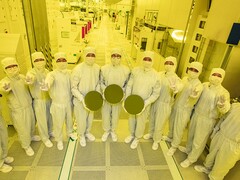Samsung has shared performance and efficiency gains for its 2 nm Gate-All-Around (GAA) manufacturing process. The figures are interesting because they depict where the Korean company is heading in the semiconductor fabrication race.
The new node is expected to arrive with the Exynos 2600, which could help Samsung’s chip business turn a profit by 2027.
2 nm GAA delivers incremental performance and improved efficiency
As reported by South Korea-based Dailian, Samsung has increased the performance of the 2 nm GAA by 5 percent and power efficiency by 8 percent. The company also cut the area by 5 percent compared to the 3 nm GAA.
While the gains might be incremental and lower than earlier estimates, the area reduction could deliver benefits in AI and mobile device applications by enabling more compact, thermally efficient chips.
Yields rise sharply to the 50 – 60 percent range
One of the bright spots in Samsung’s latest disclosure is the chip yield improvement. The company is reporting between 50 and 60 percent yields for its 2 nm production, a significant jump from earlier estimates of about 30 percent. This should enable Samsung to increase its wafer output for the Exynos 2600 from about 15,000 units per month.
Samsung can also boast multiple 2 nm contracts, including with MicroBT and Canaan, both of which are among the biggest cryptocurrency mining hardware manufacturers. Samsung has also signed a $16.5 billion deal with Tesla through 2033, demonstrating Samsung’s capacity for long-term wafer supply contracts.
TSMC retains the lead in the global foundry market with a 70.2 percent share, while Samsung trails at 7.3 percent. However, the latest 2 nm GAA report from Samsung shows its readiness to fight for foundry relevance.



















